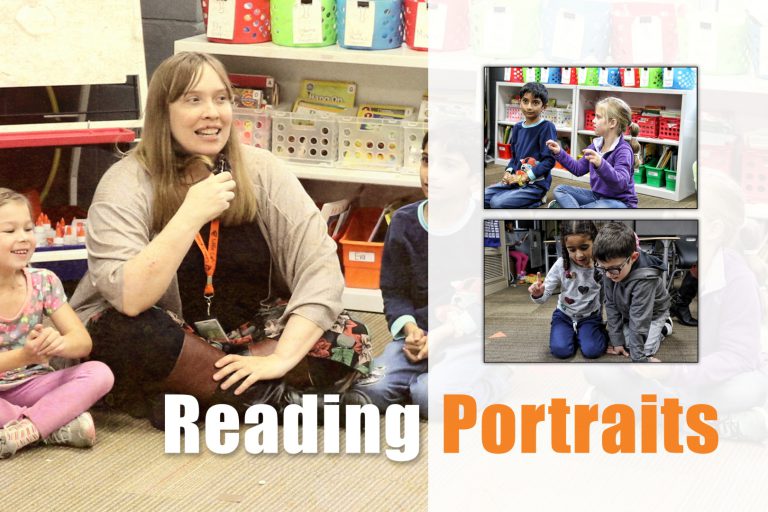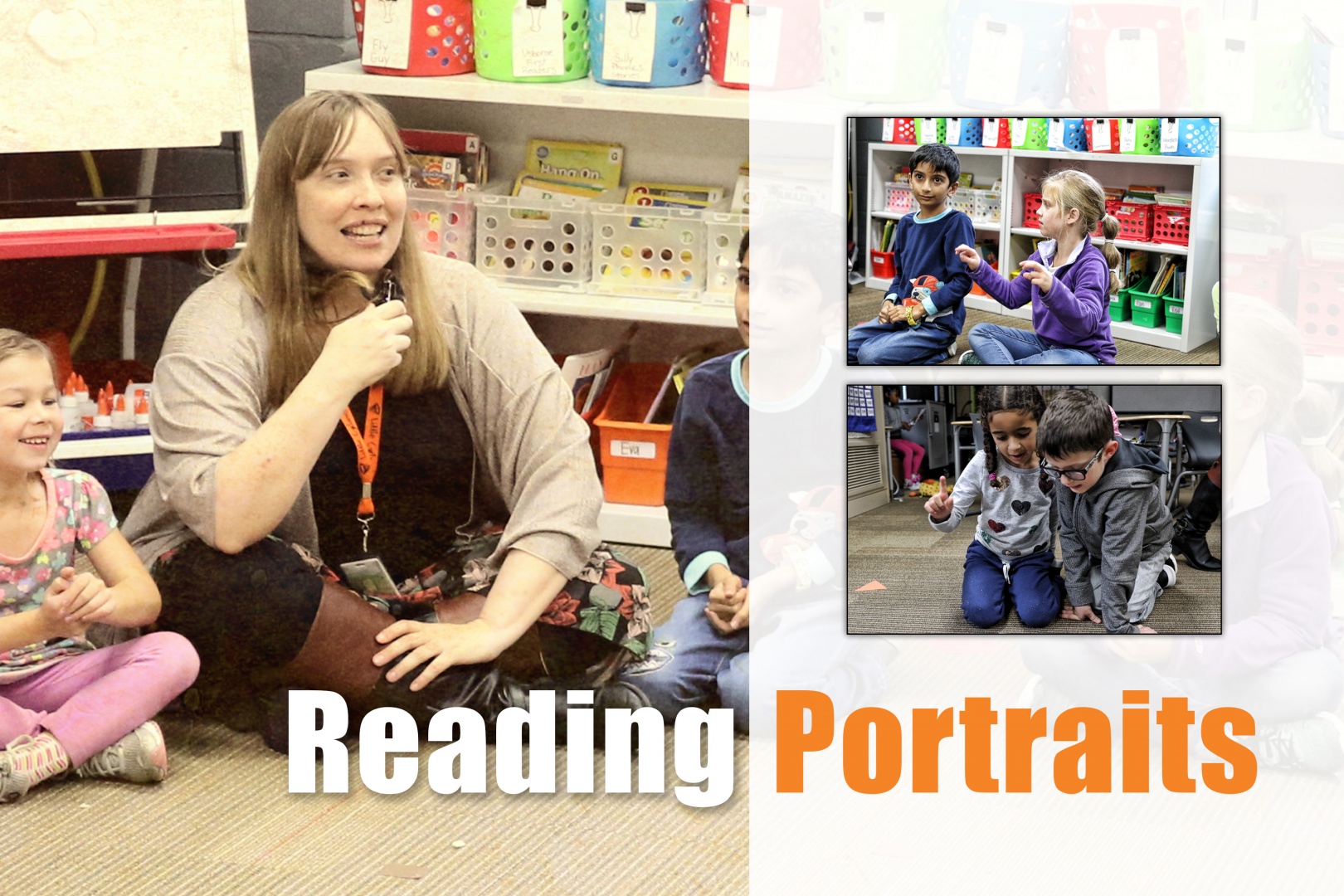

Reading Portraits

Genya Coffey and her 1st grade colleagues at Sawyer Elementary are taking time to teach students how to read portraits. “Reading portraits is a great introduction to several important first grade skills such as making careful observations and drawing inferences based on evidence. Using visual literacy makes these skills accessible to every student regardless of their current reading level.”
After comparing and contrasting dozens of portraits with partners and reflecting as a whole group, students constructed a working definition of portrait, then began considering where portraits can be found. Students discovered that they can be found just about anywhere. Next, students dug into identifying common elements that can be observed in portraits to help describe them.
Students learned physical movements to help them remember the elements of facial expression, focal point, gesture, clothing, setting, objects, quantity, size, and color, and then practiced describing portraits with partners using each of these elements. Finally, with the help of some sentence stems, students learned how to use these observations to make inferences about what the artist was trying to communicate and to be able to site what they saw in the portrait that helped them make that inference. Coffey said, “This is a great introduction to using text evidence to support your ideas – a very important reading skill we will build up to.”
Coffey plans to use these skills to help use inquiry based approaches to social studies instruction. Following these portrait lessons, the students in Ms. Coffey’s class explored a collection of portraits of and by Indigenous Peoples as a way to kick off their study of the national holidays of Columbus Day and Thanksgiving. She plans to study other national holidays, the past and present, and important historical figures in future social studies units and will use portrait study as well as the examination of primary and secondary source documents with her students. “It’s never too early to start learning research skills – first graders love investigating history!”
The entire unit is another way to infuse drama, art, music, and dance into the classroom. After attending several workshops as part of an Arts Integration 101 course offered through Des Moines Performing Arts, Coffey has been looking for ways to teach content through the arts on a regular basis. In addition to integrating visual arts and social studies instruction, Ms. Coffey has been infusing drama into her classroom community building and social emotional learning. In her monthly “Coffey Crew” newsletter to parents, Genya said, “We began by learning some drama techniques to help us bring calm bodies, focused minds, and balanced emotions to our work. We will continue to build on this as we dig into just how to cooperate and work as an ensemble. Concentration is another skill we will be using drama to develop.” Ms. Coffey will be continuing to attend Arts Integration workshops throughout the year and looks forward to adding dance and music to her classroom.